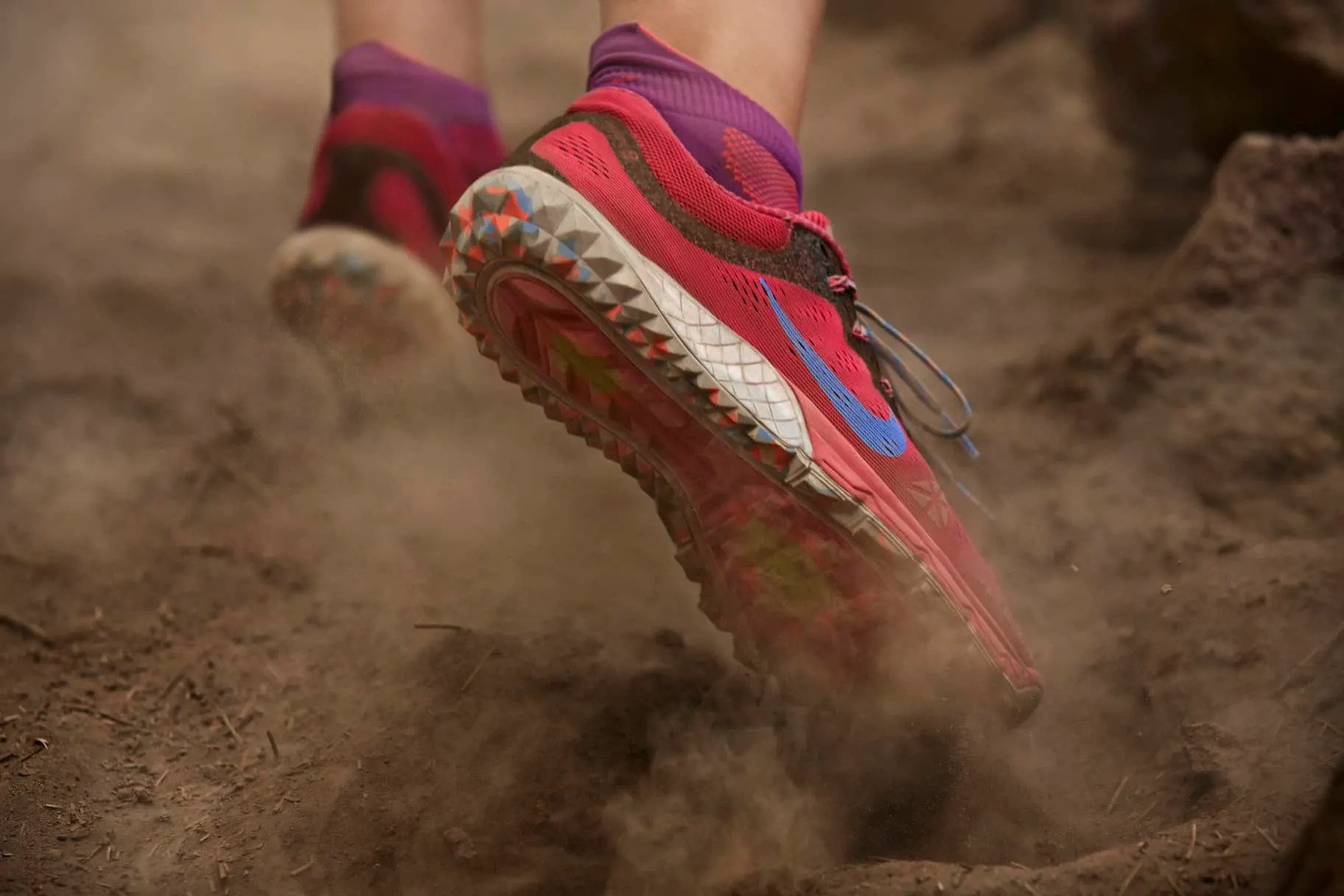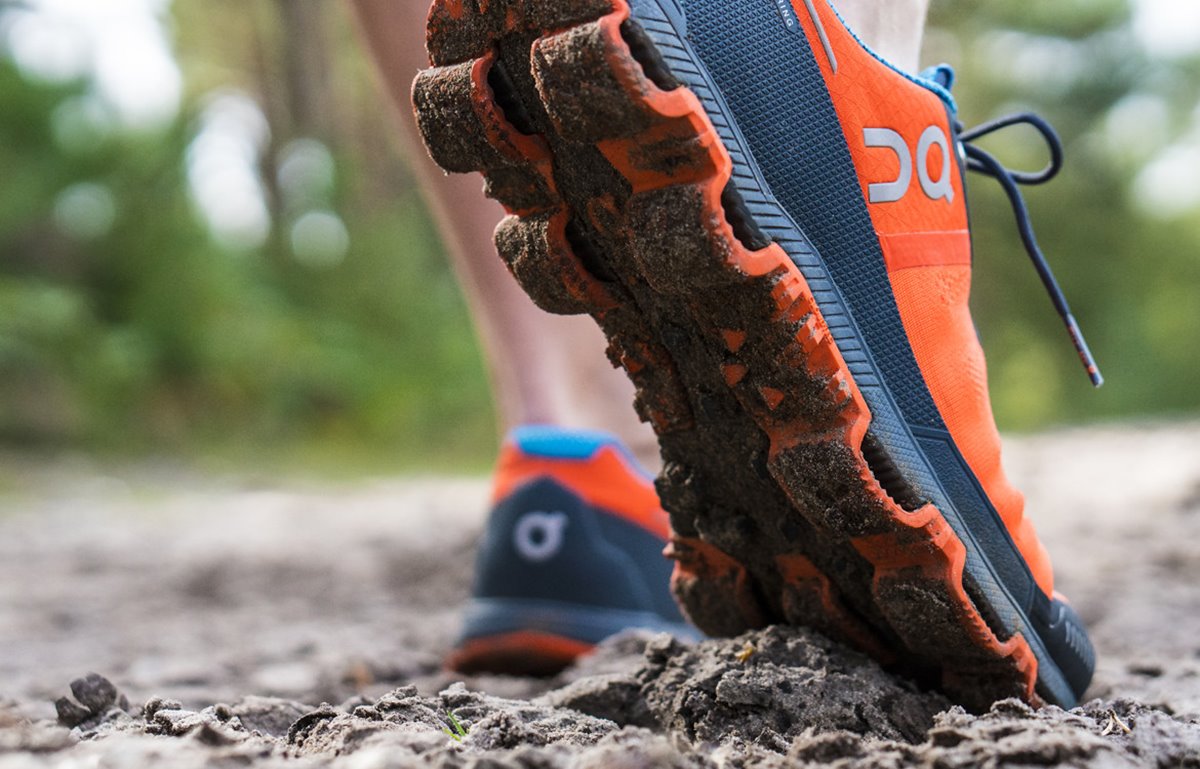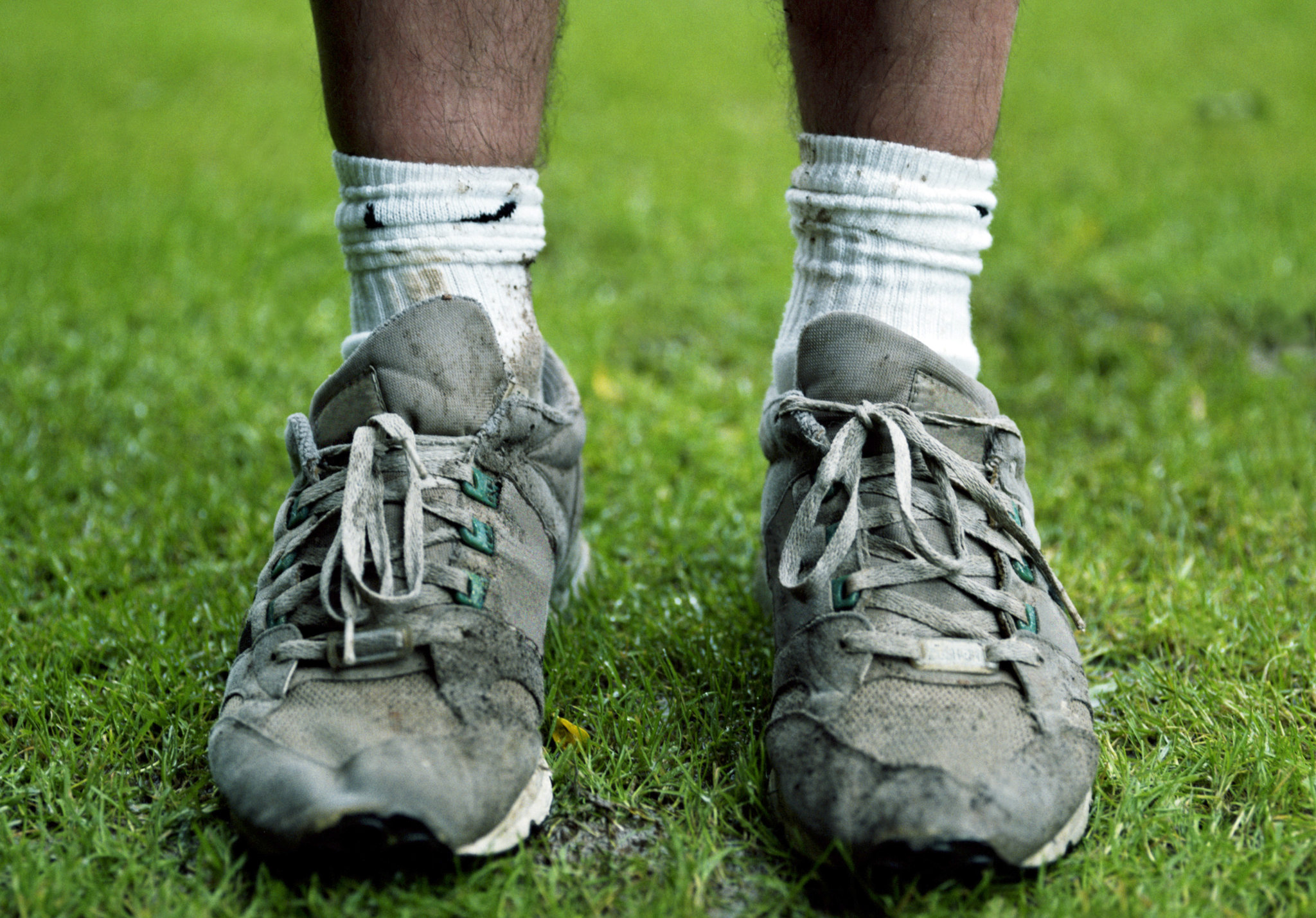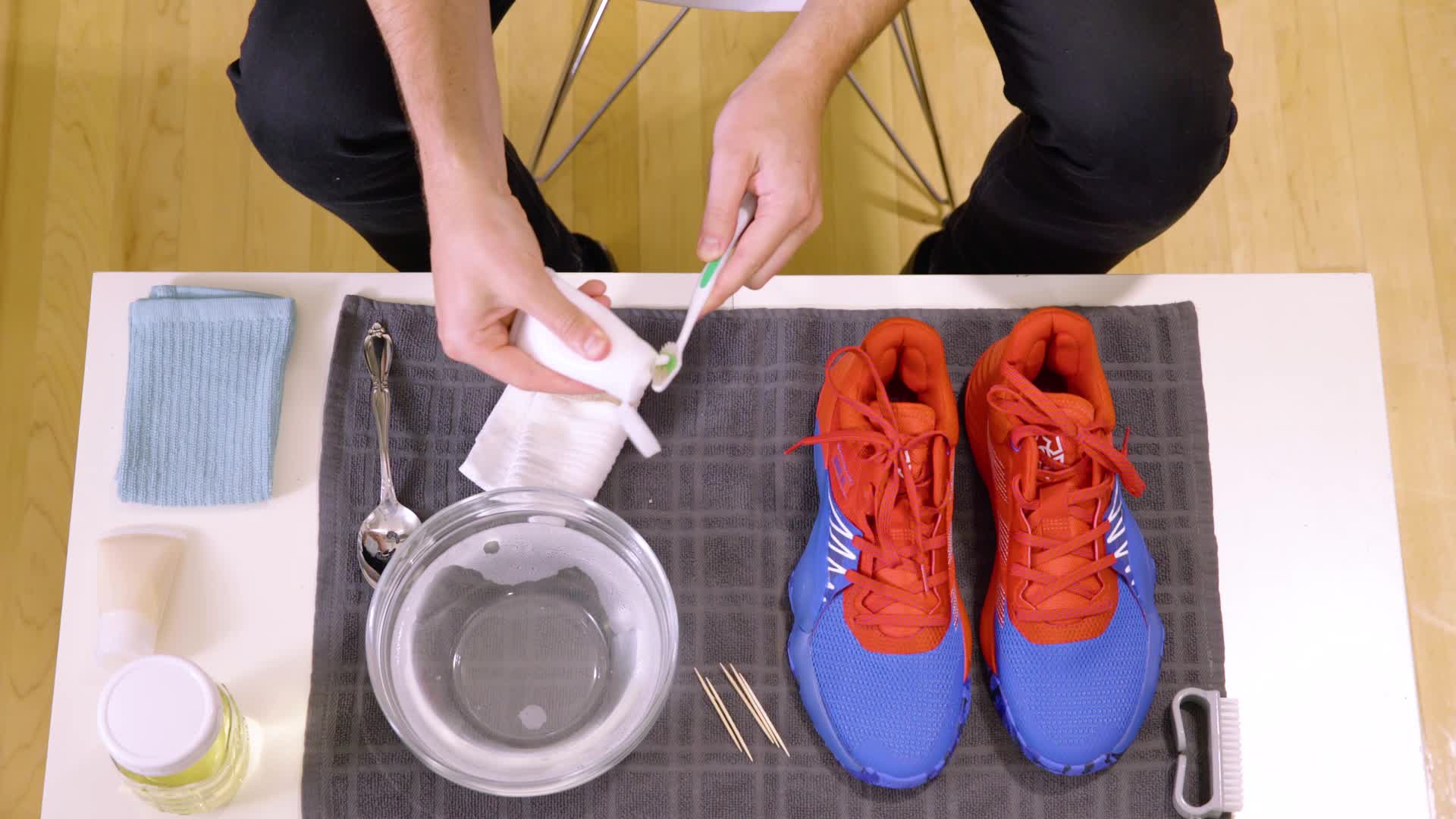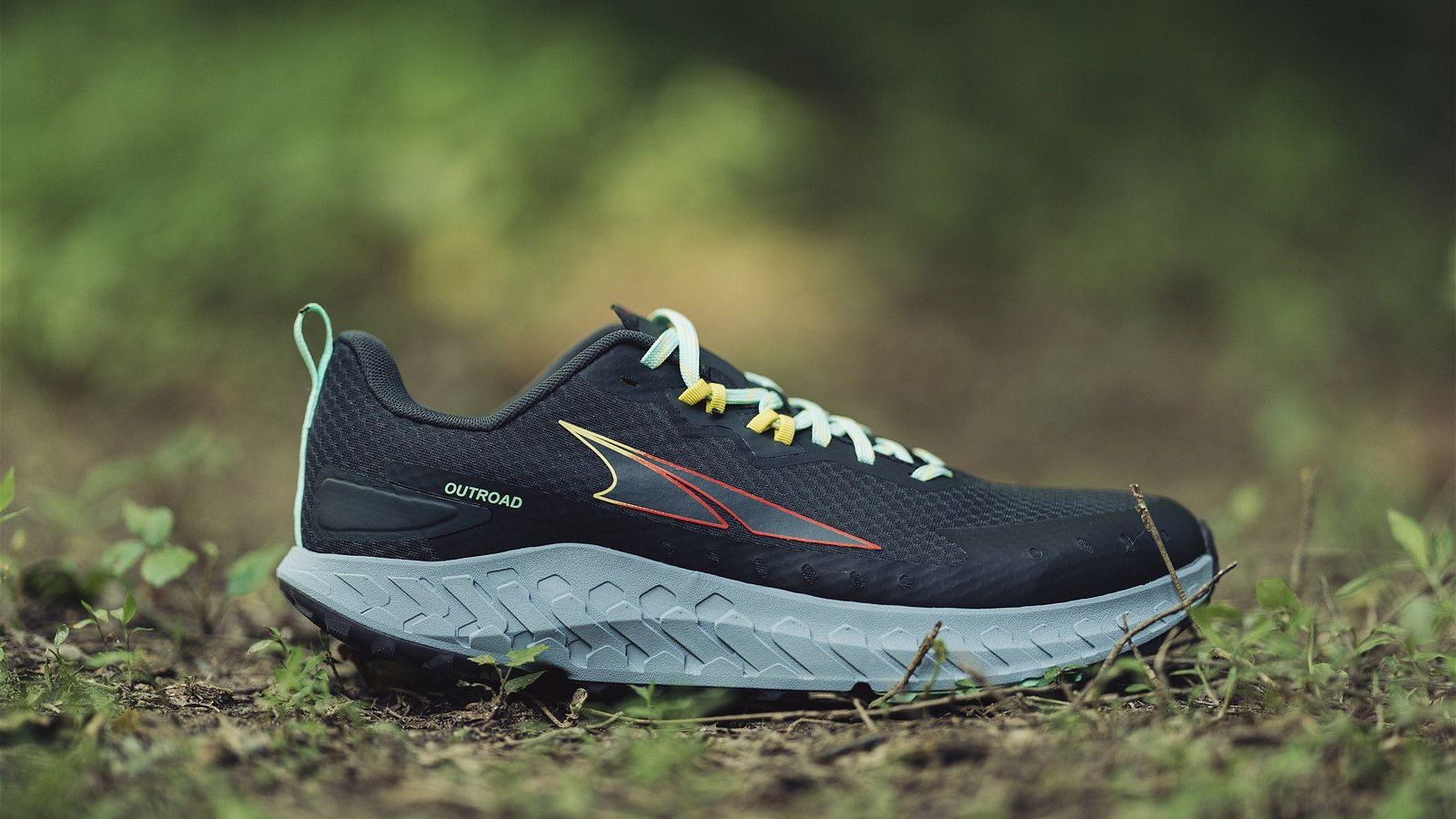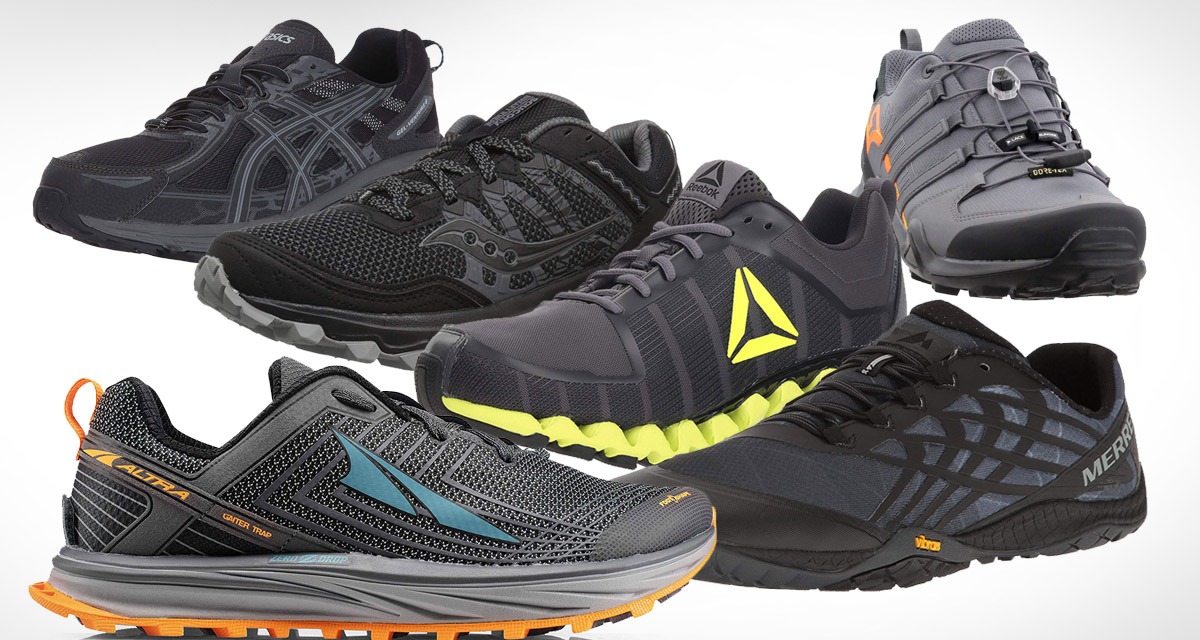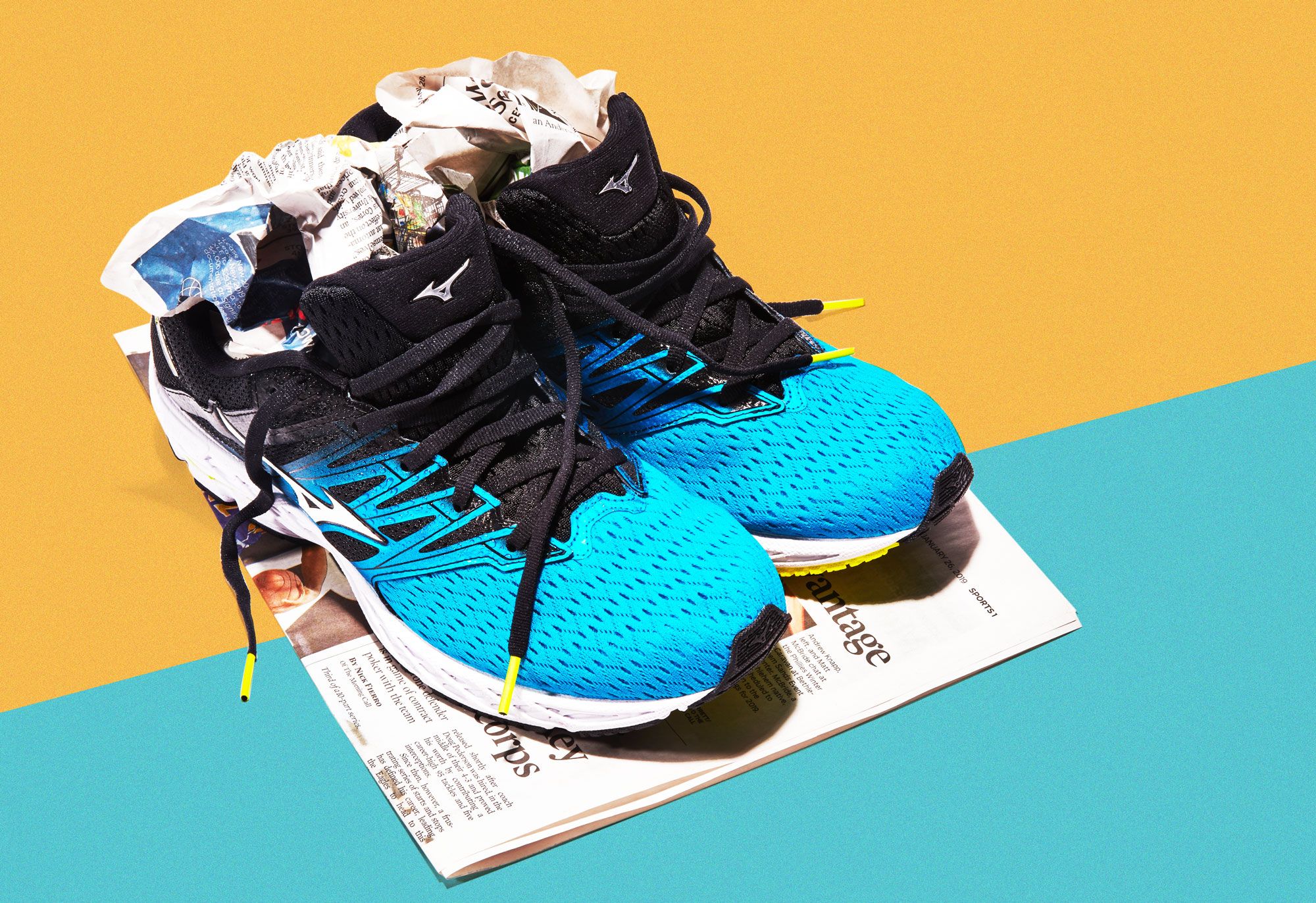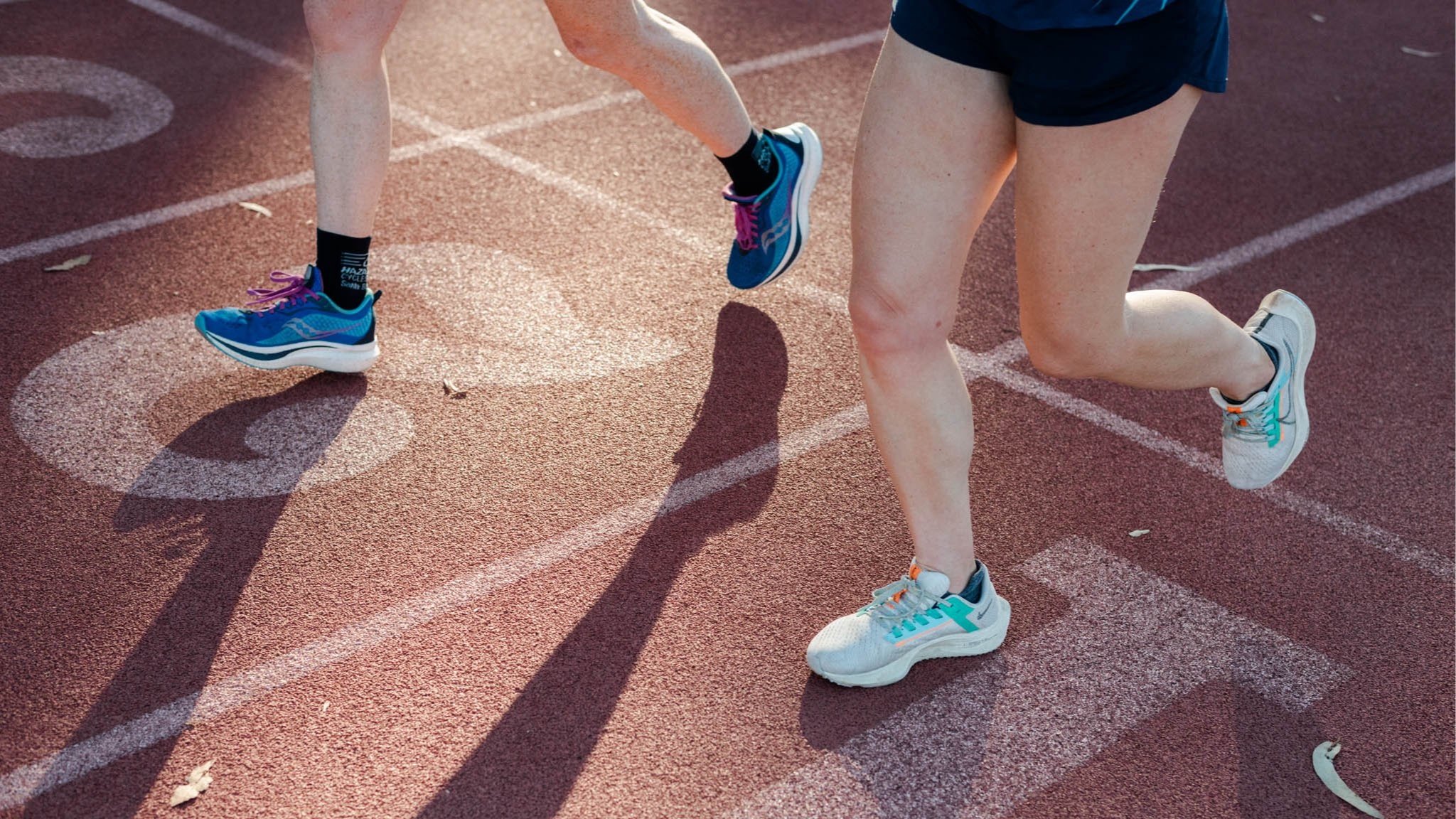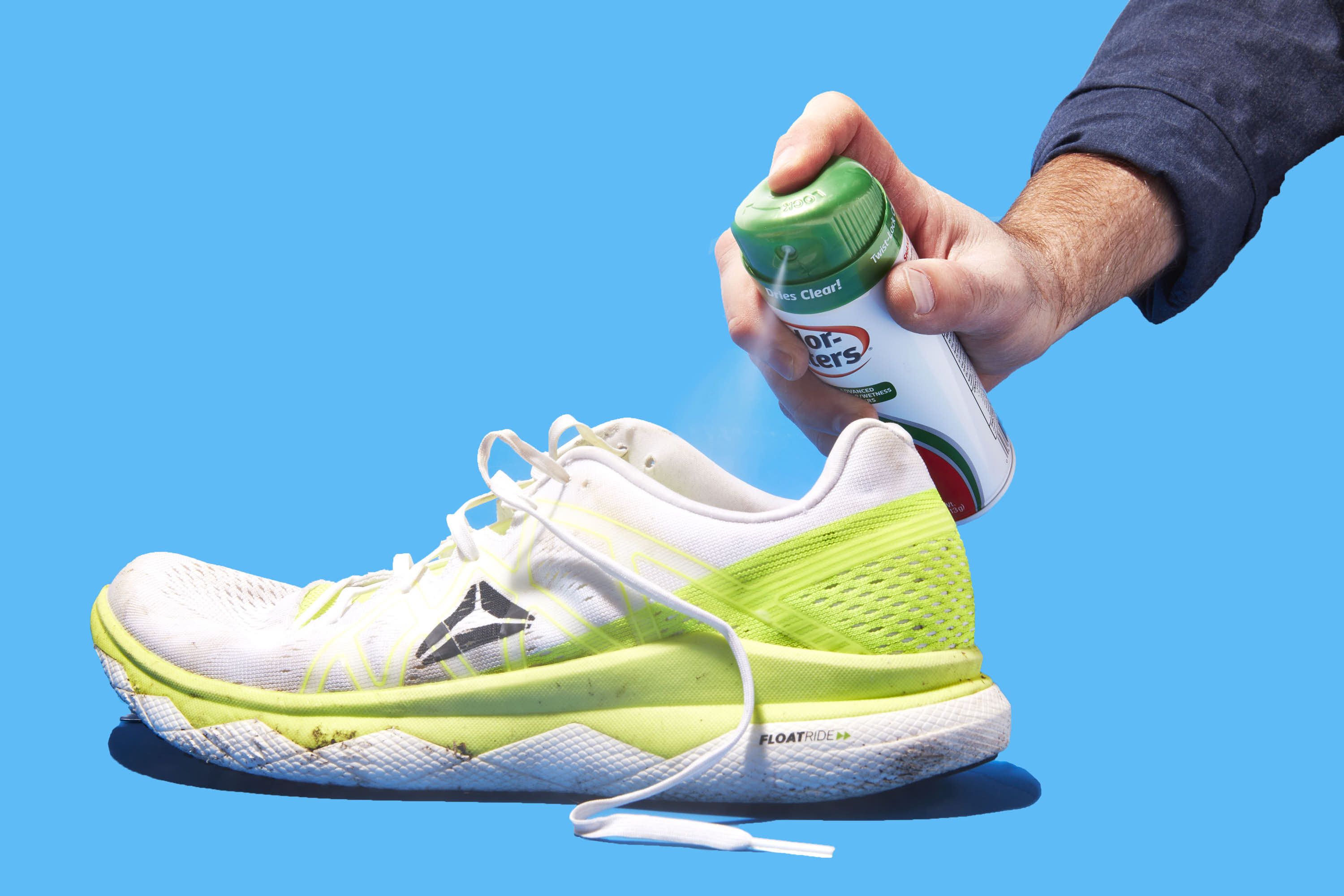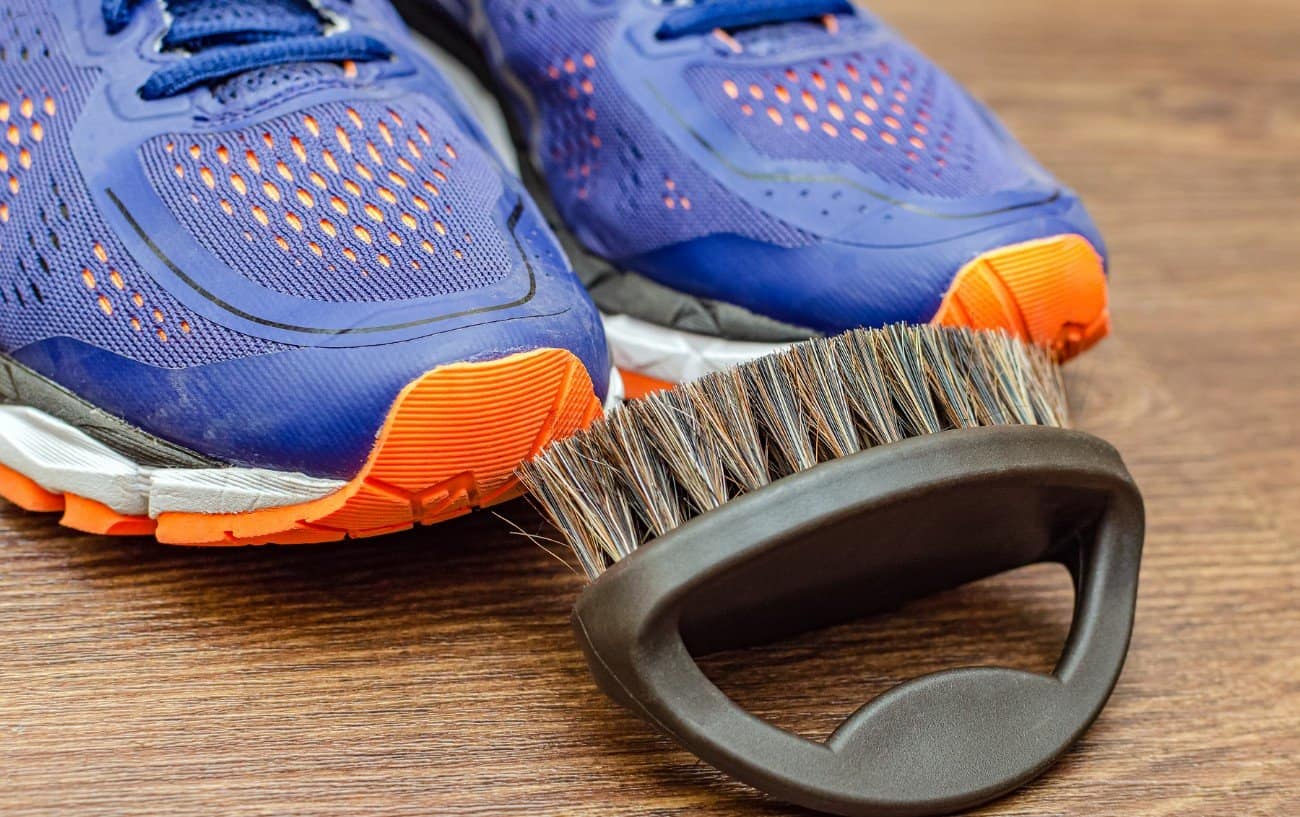

Featured
How Do You Clean Running Shoes
Modified: August 18, 2023
Looking for tips on how to clean running shoes? Discover our featured guide to keep your favorite running shoes looking fresh and smelling great.
Introduction
Running shoes are an essential piece of gear for both casual joggers and serious athletes. They provide the necessary support and cushioning to protect our feet and enhance our performance. However, after weeks or months of pounding the pavement, our running shoes can become dirty, smelly, and worn out. Cleaning and maintaining your running shoes is not only important for their longevity but also for your overall comfort and hygiene.
Properly cleaning your running shoes helps to remove dirt, dust, and bacteria that can accumulate over time. It also prevents unpleasant odors and keeps the shoes looking their best. By taking the time to clean and care for your running shoes, you can prolong their lifespan and ensure they continue to perform at their best.
In this article, we will guide you through the process of cleaning your running shoes to help you maintain their quality and functionality. We will discuss the materials needed, step-by-step instructions, and provide helpful tips to make the process as easy and effective as possible. So, let’s dive in and learn how to keep those running shoes looking and feeling brand new!
Importance of Cleaning Running Shoes
Regularly cleaning your running shoes is not just about maintaining their appearance, but it also plays a crucial role in preserving their performance and durability. Here are a few reasons why cleaning your running shoes is important:
- Odor Prevention: After long runs or intense workouts, it’s natural for your running shoes to develop an unpleasant odor. This is mainly caused by sweat and bacteria that accumulate inside the shoes. Regular cleaning helps to remove these odor-causing elements, keeping your shoes fresh and odor-free.
- Hygiene: Dirty running shoes can harbor bacteria and fungi, which can lead to foot infections or unpleasant foot odor. By cleaning your shoes, you reduce the risk of developing these issues and maintain proper foot hygiene.
- Longevity: Cleaning your running shoes helps to remove dirt, debris, and salt stains that can contribute to the deterioration of the materials and affect the overall performance of the shoes. By regularly cleaning and caring for your shoes, you can extend their lifespan, saving you money in the long run.
- Performance Enhancement: Over time, dirt and grime can build up on the outsoles of your running shoes, affecting traction and grip. By keeping the outsoles clean, you can ensure optimal performance and reduce the risk of slips or falls during your runs.
Now that we understand the importance of cleaning our running shoes, let’s move on to the materials required for the cleaning process.
Materials Needed for Cleaning Running Shoes
Before diving into the process of cleaning your running shoes, it’s essential to gather the necessary materials. Having the right tools at hand will make the cleaning process more efficient and effective. Here are the materials you’ll need:
- Mild Detergent or Shoe Cleaner: Choose a gentle, non-abrasive detergent or specialized shoe cleaner specifically designed for cleaning athletic shoes. Avoid using harsh chemicals or bleach, as they can damage the materials.
- Soft-Bristled Brush: Look for a brush with soft, synthetic bristles. The brush will be used to remove dirt, debris, and stains from the outsoles and uppers of your running shoes. Avoid using stiff brushes that can scratch or damage the shoe’s surface.
- Microfiber or Soft Cloth: Use a microfiber cloth or a soft, lint-free cloth to wipe away dirt and excess moisture from your shoes. These materials are gentle on the shoe’s surface and won’t leave behind any lint or residue.
- Old Toothbrush: An old toothbrush can be used for more delicate cleaning, such as scrubbing hard-to-reach areas or removing dirt from mesh or fabric uppers.
- Warm Water: You’ll need warm water to create a cleaning solution and rinse off the shoes. Avoid using hot water, as it can cause damage to certain shoe materials.
- Old Newspapers or Towels: These can be used to stuff your shoes and help them retain their shape while drying. Placing newspapers or towels inside the shoes also absorbs excess moisture.
Now that you have all the necessary materials prepared, let’s move on to the step-by-step process of cleaning your running shoes.
Steps to Clean Running Shoes
Cleaning running shoes is a straightforward process that can be done at home with just a few simple steps. Follow this step-by-step guide to ensure your running shoes are cleaned effectively:
- Removing Dirt and Debris: Start by removing any loose dirt or debris from the outsoles and uppers of your shoes. Use a soft brush or your hands to gently brush off dirt, rocks, or grass.
- Cleaning the Outsoles: Mix a small amount of mild detergent or shoe cleaner with warm water in a bowl or sink. Dip the soft-bristled brush into the cleaning solution and scrub the outsoles of your shoes, paying attention to the grooves and crevices where dirt tends to accumulate. Rinse the brush frequently and continue scrubbing until the outsoles are clean.
- Washing the Uppers: Depending on the material of your running shoes, you can either hand wash them or use a washing machine. For handwashing, dip a cloth or brush into the cleaning solution and gently scrub the uppers in small circular motions. Be careful not to scrub too harshly, as it may damage the materials. If using a washing machine, place your shoes in a mesh laundry bag and use a gentle cycle with cold water. Avoid using bleach or fabric softeners.
- Drying the Shoes: After cleaning, gently squeeze out any excess water from the shoes. Next, stuff the shoes with crumpled newspapers or towels to help them retain their shape and absorb moisture. Place the shoes in a well-ventilated area away from direct sunlight or heat sources. Allow them to air dry naturally for at least 24 hours. Avoid using a dryer or exposing them to excessive heat, as it can damage the shoe’s materials.
- Restoring the Shape and Structure: Once the shoes are completely dry, remove the newspapers or towels and gently reshape the shoes with your hands. This step will help restore their original shape and ensure a proper fit during your next run.
Following these steps will leave your running shoes clean, fresh, and ready for your next workout. In the next section, we will discuss how to store your cleaned running shoes properly.
Removing Dirt and Debris
Before diving into the deeper cleaning process, it’s important to remove any loose dirt and debris from your running shoes. This initial step will make the subsequent cleaning steps more effective. Here’s how to remove dirt and debris from your running shoes:
- Inspect the Shoes: Take a close look at your running shoes and identify any visible dirt or debris. Pay attention to the outsoles, treads, and uppers.
- Tap Outsoles Together: Take your shoes outside and gently tap the outsoles together. This will help dislodge any loose dirt, rocks, or pebbles that may be stuck in the grooves.
- Brush Off Dirt: Use a soft-bristled brush or your hands to gently brush off any remaining dirt or debris from the outsoles and uppers. Brush in the direction of the shoe’s grain or pattern to avoid damaging the materials.
- Shake Out Shoes: Holding the shoes upright, give them a gentle shake to loosen and remove any loose dirt or debris that may be trapped inside.
It’s important to note that this step is not intended to completely clean the shoes but is meant to get rid of the loose dirt and debris. Once this initial step is done, you can move on to the more detailed cleaning process to ensure your running shoes are thoroughly cleaned.
Now that we’ve removed the loose dirt and debris, let’s proceed to the next step: cleaning the outsoles of your running shoes.
Cleaning the Outsoles
The outsoles of your running shoes are the part that comes into direct contact with the ground, making them prone to dirt buildup and stains. Cleaning the outsoles is an important step to maintain the traction and stability of your shoes. Here’s how you can effectively clean the outsoles:
- Create a Cleaning Solution: Fill a basin or sink with warm water and add a small amount of mild detergent or shoe cleaner. Mix until the detergent is dissolved in the water.
- Dip the Brush: Take a soft-bristled brush and dip it into the cleaning solution. Ensure the brush is thoroughly soaked but not overly saturated.
- Scrub the Outsoles: Gently scrub the outsoles of the running shoes with the brush. Pay special attention to the treads and grooves where dirt and debris tend to accumulate. Use small circular motions to remove any stubborn stains or dirt buildup.
- Rinse the Brush: Rinse the brush frequently in clean water to remove dirt and detergent residue. This prevents the brush from spreading dirt back onto the shoes.
- Rinse the Outsoles: Once you’ve thoroughly scrubbed the outsoles, rinse them under running water to remove any remaining dirt or detergent. Ensure all the soap is washed away.
After cleaning, inspect the outsoles. If there are any stubborn stains or areas that require further cleaning, you can repeat the process or use an old toothbrush to target specific spots. Once the outsoles are clean, you can move on to the next step: washing the uppers of your running shoes.
Washing the Uppers
The uppers of your running shoes can accumulate dirt, sweat, and stains, especially on the fabric or mesh areas. Properly washing the uppers will help remove these impurities and restore the appearance of your shoes. Here’s how to wash the uppers of your running shoes:
- Assess the Material: Different running shoe uppers require different cleaning methods. Check the manufacturer’s guidelines or instructions to determine if your shoes are machine washable or need to be hand washed.
- Handwashing Method: If your running shoes are not machine washable, fill a basin or sink with warm water and add a small amount of mild detergent or shoe cleaner.
- Dip the Cloth or Brush: Dip a soft cloth or brush into the cleaning solution and wring out any excess water. The cloth or brush should be damp, not soaked.
- Gently Scrub: Begin gently scrubbing the uppers of the shoes in small circular motions. Pay particular attention to areas with visible stains or dirt. Avoid excessive scrubbing, as it can damage the materials.
- Remove Stubborn Stains: For stubborn stains, you can use an old toothbrush dipped in the cleaning solution to spot clean the affected areas. Gently scrub the stained areas until the stains start to fade.
- Rinse: Once you’ve finished cleaning the uppers, rinse them under cool running water to remove any remaining detergent or dirt.
If your running shoes are machine washable, place them in a mesh laundry bag to protect them during the wash cycle. Use a gentle cycle with cold water and a small amount of mild detergent. Avoid using bleach or fabric softeners, as they can damage the materials.
After washing the uppers, gently squeeze out any excess water from the shoes. It’s important to avoid wringing or twisting the shoes too forcefully, as this can deform their shape. Move on to the next step: drying your shoes.
Drying the Shoes
Properly drying your running shoes is a crucial step to prevent mold, mildew, and unpleasant odors. Here’s how to effectively dry your shoes:
- Remove Excess Moisture: After washing, gently squeeze out any excess water from the shoes. Avoid twisting or wringing them as this can damage the materials and affect their shape.
- Stuff with Newspapers or Towels: Take a few sheets of old newspapers or clean towels and crumple them up. Stuff the shoes with the crumpled material to help absorb moisture and maintain their shape while drying. Make sure to fill the entire shoe, including the toe area.
- Air Dry: Place the shoes in a well-ventilated area away from direct sunlight or heat sources. Avoid using a dryer or placing them near heaters, as excessive heat can warp or shrink the materials. Allow the shoes to dry naturally for at least 24 hours or until they are completely dry.
- Rotate to Aid Drying: To ensure thorough drying, periodically rotate the shoes and change the newspapers or towels inside. This helps to distribute air and speed up the drying process.
It’s important to be patient during the drying process and not rush to wear damp shoes. Putting on wet shoes can lead to discomfort, blisters, and potential damage to the shoes.
Once your running shoes are completely dry, remove the newspapers or towels and gently reshape the shoes with your hands. This step helps restore their original shape and ensures a proper fit during your next run.
With your clean and dry running shoes ready to go, let’s move on to the next step: restoring the shape and structure of the shoes.
Restoring the Shape and Structure
After cleaning and drying your running shoes, it’s important to restore their shape and structure. This step helps ensure a proper fit and maintains the integrity of the shoes. Here’s how to restore the shape and structure of your running shoes:
- Gently Reshape the Shoes: Start by removing the newspapers or towels from inside the shoes. Gently use your hands to reshape the shoes and realign any folds or creases that may have formed during the drying process. Pay special attention to the toe box and heel area to ensure they retain their intended shape.
- Lace Up or Fasten the Shoes: If your running shoes have laces or fastenings, make sure to lace them up or fasten them properly. This helps maintain the shape and structure of the shoes, and also ensures a secure fit when you wear them again.
- Put on Inserts or Insoles: If you use any custom inserts or insoles in your running shoes, reinsert them once the shoes are reshaped. This helps maintain the proper support and cushioning that your feet need during your runs.
By taking the time to restore the shape and structure of your running shoes, you’re ensuring that they’ll provide you with the right support and maintain their durability over time. Properly cared-for shoes can help prevent discomfort and injuries during your runs.
Now that your running shoes are cleaned, dried, and reshaped, the final step is to properly store them until your next run.
Storing Cleaned Running Shoes
Proper storage of your cleaned running shoes is important to maintain their condition and prolong their lifespan. Here are some tips for storing your clean running shoes:
- Avoid Dumping: Avoid simply throwing your shoes into a pile or at the bottom of your closet. This can lead to misshapen shoes and potentially damage them.
- Air Them Out: Before storing, make sure your shoes are completely dry. Moisture trapped inside the shoes can foster the growth of mold and mildew. Give them some time to air out in a well-ventilated area to ensure they’re fully dry.
- Keep Them in a Cool, Dry Place: Choose a storage location away from direct sunlight and excessive heat or humidity. Extreme temperatures can alter the shape and compromise the materials of your shoes.
- Use Shoe Trees or Inserts: Consider using shoe trees or inserts specifically designed to maintain the shape of your running shoes. These help retain the shoe’s form and prevent unnecessary creases or deformation.
- Store in Shoe Boxes or Dust Bags: If you have the original shoe boxes or dust bags, use them to store your running shoes. These help protect the shoes from dust, dirt, and light exposure, which can cause discoloration over time.
- Organize Them Properly: Arrange your shoes in a neat and organized manner, ensuring they’re not squished or stacked on top of each other. This prevents any unnecessary pressure or strain on the shoes.
- Rotate Your Shoes: If you have multiple pairs of running shoes, consider rotating them regularly. This allows each pair to fully dry out between uses and prevents excessive wear and tear on a single pair.
By following these storage tips, you can keep your clean running shoes in the best possible condition, ready for your next run.
Now that you know how to store your running shoes, let’s move on to some additional tips for maintaining clean running shoes.
Tips for Maintaining Clean Running Shoes
Keeping your running shoes clean and well-maintained goes beyond just the cleaning process. Here are some additional tips to help you maintain clean running shoes:
- Regularly Clean and Rotate: Aim to clean your running shoes after every few uses or whenever they become visibly dirty. Regular cleaning prevents dirt and stains from becoming deeply embedded and makes the cleaning process easier.
- Alternate Running Shoes: If possible, rotate between multiple pairs of running shoes. This allows each pair to fully dry out and recover between runs, reducing the risk of odor and extending the lifespan of each pair.
- Wear Moisture-Wicking Socks: Opt for moisture-wicking socks that help keep your feet dry during runs. This can minimize sweat and moisture buildup inside your shoes, preventing bacterial growth and odors.
- Remove Shoes Properly: Avoid kicking off your shoes or using your other foot to take them off. This can damage the heel area and affect the overall shape of the shoes. Instead, loosen the laces and gently remove them with your hands.
- Store Shoes Away from Pets: Keep your shoes in a secure location, away from curious pets who may mistake them for toys or chew on them, causing damage.
- Protect Shoes from Rain and Water: Whenever possible, try to avoid running through puddles or in heavy rain. Excessive exposure to water can damage the materials and affect the shoe’s performance.
- Handle Shoes with Clean Hands: Before handling your running shoes, make sure your hands are clean to avoid transferring dirt, oil, or other substances onto the shoes.
- Get Professional Cleaning: If you’re unsure about cleaning your running shoes yourself, consider taking them to a professional shoe cleaner. They have the expertise and specialized tools to clean your shoes effectively without causing damage.
- Replace Worn-Out Shoes: Even with proper maintenance, running shoes eventually wear out. Pay attention to the cushioning and tread wear of your shoes. When they no longer provide adequate support, it’s time to invest in a new pair.
By following these tips, you can keep your running shoes clean, fresh, and in optimal condition for a longer period. Proper maintenance not only helps extend their lifespan but also ensures a comfortable and enjoyable running experience.
Now that you’re equipped with the knowledge to maintain clean running shoes, it’s time to put it into practice and enjoy your runs with footwear that feels and looks great!
Conclusion
Maintaining clean running shoes is essential for both hygiene and longevity. With regular cleaning and proper care, you can ensure that your running shoes remain comfortable, odor-free, and in optimal condition. By following the steps outlined in this article, you can effectively remove dirt, debris, and stains from your shoes, as well as restore their shape and structure.
Remember to gather the necessary materials, such as mild detergent, a soft-bristled brush, and newspapers or towels for drying. Take the time to gently remove dirt and debris, clean the outsoles and uppers, and allow the shoes to air dry properly. Additionally, consider implementing storage practices that minimize exposure to moisture, dust, and extreme temperatures.
Maintaining clean running shoes not only enhances their performance but also improves your overall running experience. By keeping your shoes in good condition, you reduce the risk of foot infections, prevent odors, and extend their lifespan. Plus, there’s nothing quite like slipping into a fresh pair of running shoes before hitting the pavement.
Lastly, remember to follow the tips for maintaining clean running shoes, such as regularly cleaning and rotating your shoes, wearing moisture-wicking socks, and handling them with clean hands. These practices further contribute to the cleanliness and longevity of your running shoes.
Now that you’re armed with the knowledge and tips to clean and maintain your running shoes, put them into action and enjoy mile after mile of comfortable and clean runs!
